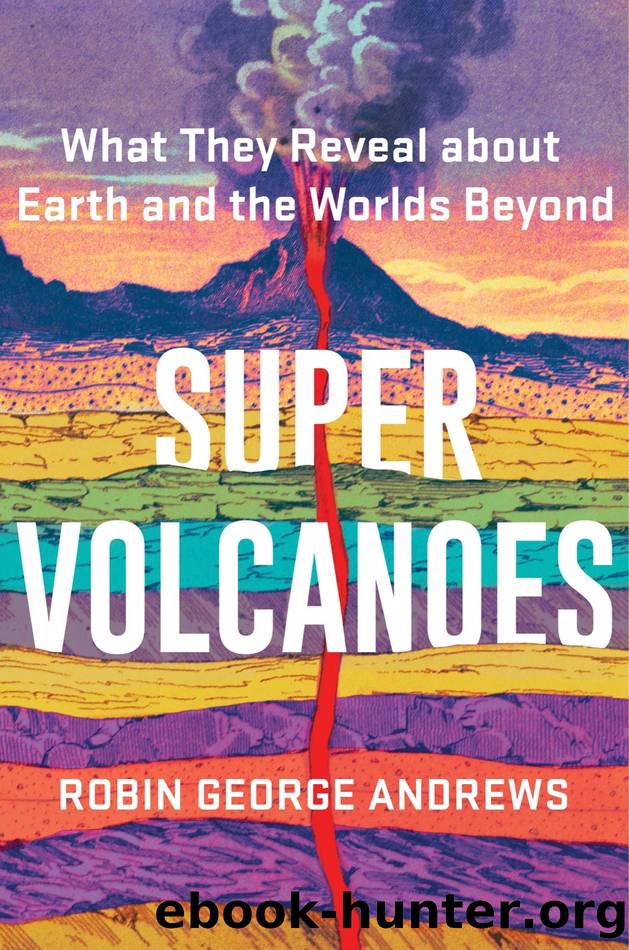Super Volcanoes by Unknown

Author:Unknown
Language: eng
Format: epub
Tags: Epub3
Publisher: W. W. Norton & Company
THE LAVA SEAS are arguably the Moonâs oddest volcanic feature. But they are still just one stop on the grand tour of the lunar kingdomâs volcanic wilderness.
Harrison Schmitt, the professional geologist flung onto the Moon during the Apollo 17 mission, was bouncing across the lunar surface in December 1972 when he spied something unexpected. âEverything on the Moon is 256 shades of gray,â says Gregg. âAnd he caught this flash of orange.â He hopped over and scooped up some of the samples. They were orange beads of glass. And they werenât alone. Two years later, scientists perusing through the returned lunar samples found glass beadsâblack and green onesâin the Apollo 11 and Apollo 15 samples too, ranging from the size of human red blood cells to those the size of an ant.21 Their origin was clear, and they told a remarkable story: billions of years ago, there were fountains of lava on the Moon.
Remember those lava fountains that emerged from KÄ«laueaâs fissure 8 during its 2018 masterpiece? The same happened on the Moon, but in a distinctly alien fashion. Gregg, bristling with excitement, walks me through it.
Eons ago, gassy magma below rushed up through cracks, fissures, and vents on the surface. Water and carbon dioxide are the two most common gasses dissolved in magmas on Earth. But the Moon, being dry and lacking oxygen, probably went for carbon monoxide instead. âAnd thereâs no atmospheric drag and a sixth of the gravity,â says Gregg. That means millions of small blebs of erupted lava cooling into volcanic glass could effectively glide for dozens of miles across the lunar landscape.
Glass shards of all shapes and sizes can be found all over the Moon, says Henderson. Some fields of volcanic glass cover nearly 400 square miles, about 17 times the area of Manhattan. The maria may not have an obvious source, but these glazy pastures sometimes do. A huge halo of volcanic glass can be seen inside Schrödinger crater. It surrounds a bump at the center, one thatâs 1,500 feet tall and covers an area double the size of Chicago. That bump has a hole punched into it. That hole is a vent, and that bump is a probably a big volcano that, long ago, blasted out fountains of lava, raining glass down upon the Moon.
You can find thousands of objects that look like volcanoes all over the Moon. Many are very likely to be volcanoes, but because this cannot be definitively determined from orbit, they are often given vaguer names, like bumps, domes, or cones. Marius Hills, found in the Ocean of Storms, is a collection of hundreds of domes and cones, each built by its own fountain of lava. Some have collapsed sides. On Earth, volcanic cones can have one of their flanks collapse due to structural weakness. This probably happened on the Moon too, but some of the larger lava blobs escaping the vent levitated in the low-gravity confines of the cone. From there, a blob could drift into the middle of the coneâs wall and bore a hole through it.
Download
This site does not store any files on its server. We only index and link to content provided by other sites. Please contact the content providers to delete copyright contents if any and email us, we'll remove relevant links or contents immediately.
Machine Learning at Scale with H2O by Gregory Keys | David Whiting(4260)
Never by Ken Follett(3884)
Fairy Tale by Stephen King(3307)
Will by Will Smith(2873)
Fantastic Beasts and Where to Find Them: The Original Screenplay by J. K. Rowling(2487)
Can't Hurt Me: Master Your Mind and Defy the Odds - Clean Edition by David Goggins(2277)
It Starts With Us (It Ends with Us #2) by Colleen Hoover(2256)
The Storyteller by Dave Grohl(2198)
Friends, Lovers, and the Big Terrible Thing by Matthew Perry(2183)
The Becoming by Nora Roberts(2153)
Cloud Cuckoo Land by Anthony Doerr(2062)
New Morning Mercies: A Daily Gospel Devotional by Paul David Tripp(1900)
HBR's 10 Must Reads 2022 by Harvard Business Review(1821)
The Complete Witcher by Andrzej Sapkowski(1820)
A Short History of War by Jeremy Black(1817)
Cytonic by Brandon Sanderson(1810)
Go Tell the Bees That I Am Gone by Diana Gabaldon(1732)
Leviathan Falls (The Expanse Book 9) by James S. A. Corey(1702)
A Game of Thrones (The Illustrated Edition) by George R. R. Martin(1665)
